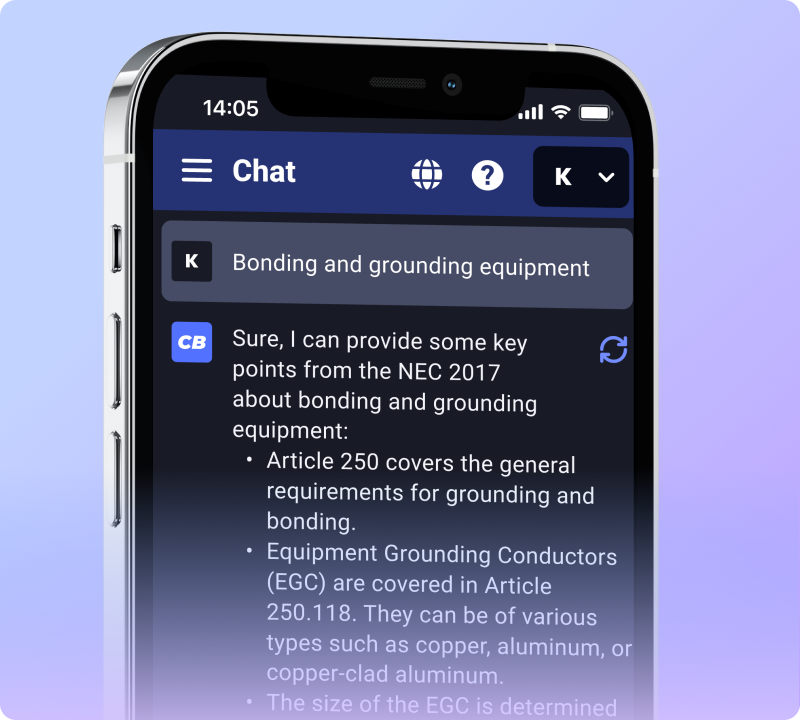Are you tired of dealing with the hassle of electrical conduit for your wiring projects? MC cable is here to simplify things. This type of power line doesn’t need a pipe for installation, which saves both time and effort.
Our article will guide you through everything about MC cable, from what it is to how you can use it effectively. Get ready to learn!
Key Takeaways
- MC cable stands for metal clad cable and offers protection to insulated wires with its durable metal armor, making it suitable for tough conditions like corrosive environments or areas prone to damage.
- There are various types of MC Cable including TECK90, Feeder MC, and Jacketed MC, each designed for specific conditions such as wet places, industrial power distribution, or where extra moisture protection is needed.
- Key features of MC Cable include armor protection for durability in harsh environments, flexibility for easy installation without needing a pipe conduit, and availability in versions with or without a ground wire.
- Suitable uses for MC Cable cover indoor and outdoor installations, exposed or concealed setups, control and signal circuits showing its versatility in electrical wiring needs across different settings.
- When installing MC Cable important considerations include respecting the bending radius to avoid damage to the cable integrity and ensuring proper securing and support, especially near connections to maintain safety and stability.
Definition of MC Cable
MC cable stands for metal clad cable. This type of cable is a special kind of electrical wiring used for powering buildings and equipment. It is made with metal armor that protects the insulated wires inside.
This armor can handle tough conditions like being in corrosive environments or areas where it might get hit or crushed.
These cables are built to last and offer both durability and flexibility, making them perfect for many different uses. MC cables come in various sizes, from small #14 AWG wires up to huge 2,000 MCM ones, which means they can carry a lot of power safely from one place to another.
They’re also designed to meet the strict requirements of the National Electric Code (NEC), ensuring they’re safe and reliable for service feeders, branch circuits, and more in commercial, industrial, or residential settings.
Metal Clad Cable brings unparalleled protection and convenience to professional electricians across multiple industries.
Types of MC Cable
MC Cable comes in various types, including TECK90, Feeder MC, and Jacketed MC. Each type has its own specific applications and features, catering to different electrical needs.
TECK90
TECK90 is a strong type of metal-clad cable that handles tough situations well. It can face wet and damp places without worry. This cable shines because it’s okay for direct burial in the ground.
You don’t need extra conduits or protection to lay it down. Its construction includes a PVC jacket that guards against water, caustic chemicals like chlorine, and other harsh conditions found underground.
Electricians pick TECK90 for power lines running to air conditioners, water heaters, and more because it’s built tough with an armor of steel wire. This armor stops cuts and breaks before they happen.
Also, TECK90 cables come with grounding options right inside them, making sure everything stays safe during use. Whether laying new lines or fixing up old ones in areas where moisture is a risk, TECK90 stands out as a reliable choice for keeping the lights on and machines running smoothly even under the dirt.
Feeder MC
Moving on from TECK90, Feeder MC cable steps in as a sturdy choice for feeder circuits. This type of metal clad cable shines for distributing power efficiently in industrial areas.
Workers install it without needing a conduit, which cuts down time and effort.
Feeder MC is known for its role in powering heavy machinery across vast factories or complexes. “Suitable for power distribution in industrial settings,” this cable connects the dots between high-energy sources and their destinations with ease.
With copper conductors inside, it handles high ampacity to keep everything running smoothly.
Jacketed MC
After discussing Feeder MC, let’s talk about Jacketed MC. This type of metal clad cable comes with an extra layer of protection: a PVC jacket. This jacket makes it safe for both wet and damp areas.
You can even bury it directly underground. It’s perfect for outdoor use too, especially when you add rain-tight connectors.
Jacketed MC cables stand out because they resist water and prevent corrosion. They work well in places like air conditioning units outside or power lines buried near masonry and concrete.
This versatility means electricians often pick this cable for tough jobs where moisture or direct contact with the earth is a concern.
Key Features of MC Cable
MC cable features armor protection for durability and flexibility, making it suitable for various indoor and outdoor installations. Read more to explore its versatility.
Armor Protection
Armor protection in MC cables keeps the wires inside safe from damage. Types like aluminum interlocked armor (AIA), continuously corrugated copper weld (CLX), and steel wire armor (SWA) add a strong layer around the electrical cables.
This protection is key for places that might be rough or dangerous. It stops sharp objects from cutting into the cable and shields the wires from impacts.
MC Cable’s armor turns it into a fortress, safeguarding the power flowing within.
This kind of cable works well in locations where dangers lurk, thanks to its tough outer shell. Being suitable for hazardous areas means these cables can handle rough conditions without letting harm come to the conductors inside.
This makes sure that electricity moves safely and reliably, no matter where it’s used.
Flexibility
MC cable’s flexibility
easy to install
bends well
Workers can handle and set up the MC cable faster because of its bendable nature.
This ease of use extends to various settings since MC cables are good for both inside and outside jobs. They move easily from one condition to another without needing extra parts or changes.
Next, we’ll explore the different types that come with and without a ground wire.
Variants With and Without Ground
MC cable
ground wires
They can protect against electric shocks.
MC cables with four or fewer conductors sized no bigger than 10 AWG need secure attachments every 6 feet or less. These range from metal clad cables used indoors to those laid underground where moisture is present.
Whether installing a low-voltage system inside or handling material outside, choosing the right MC cable matters. This includes deciding if you need one with a ground wire based on your project’s requirements and following the National Electrical Code guidelines closely.
Uses Permitted for MC Cable
MC Cable is suitable for various applications, including indoor and outdoor installations, exposed or concealed work, as well as control and signal circuits. It offers flexibility and durability for a wide range of electrical wiring needs.
Indoor and Outdoor Installations
MC cable shines because it works well inside and outside. This versatility means you can run it through your basement or out in the garden. For places that get wet, like bathrooms or outdoor areas, using MC cable with a special PVC jacket keeps things safe and dry.
You don’t have to worry about burying it either since it’s approved for direct burial. Just make sure to use anti-short bushings at connections to protect wires from sharp edges.
For securing MC cable, staples ensure everything stays in place, whether on ceiling beams indoors or against exterior walls. This makes installation straightforward across different settings.
This cable adapts easily to both exposed and hidden setups, letting you power up lights or machines without worrying about the environment they’re in.
Exposed or Concealed Work
MC cable suits both exposed and hidden tasks in buildings. This makes it great for running along surfaces or hiding behind walls. It fits well in many places, from homes to offices.
MC cable’s design allows it to lay flat against surfaces or twist around corners without support under certain conditions.
For concealed work, like inside walls, MC cable is a smart pick because you can fish it through spaces without seeing the cables. This keeps rooms looking clean and free of wires. Whether laying them out in the open or tucking them away, choose MC cable for safe and reliable wiring everywhere.
Control and Signal Circuits
MC cables are commonly used for control and signal circuits. They provide a reliable means of transmitting signals and regulating the operation of various electrical systems. With their suitability for hazardous locations and healthcare facilities, MC cables offer flexibility and protection, making them ideal for use in power, lighting, control, and signal circuits.
When it comes to wiring needs in diverse environments like commercial buildings or industrial settings, MC cable is often the go-to solution due to its versatility and adaptability.
The ability to handle these different circuit types makes MC cable an essential component for ensuring efficient electrical operations.
Installation Considerations
Consider the cable’s bending radius during installation. Ensure proper securing and supporting of the MC Cable.
Bending Radius
The bending radius of MC cable is crucial to prevent damage. Specific requirements are outlined in section 330.24 of the NEC, and improper bending can compromise the cable’s integrity.
It is essential to adhere to these guidelines when installing and handling MC cable to ensure its durability and performance.
Securing and Supporting
To ensure safety and stability, MC cables must be secured using staples, cable ties, straps, or other approved means. They should be supported within 300 mm (12 in.) of every box, cabinet, fitting, or termination.
Fittings are also allowed as a method of support for the cables.
For securing and supporting MC cables during installation or maintenance activities in your electrical projects within material handling facilities or waste management areas with AC cables and gauge requirements ensure proper and approved fastening methods are used to prevent any ground-fault incidents.
Wet or Damp Environments
MC Cable with PVC jacket
listed rain-tight fitting
approved for wet or damp environments
protection against moisture ingress
With this understanding of how MC cables perform in wet or damp environments, let’s explore the considerations for installation.
Conclusion
MC Cable, a versatile multiconductor cable used in various applications, comes with many benefits. From its flexibility and armor protection to its suitability for indoor, outdoor, exposed, or concealed installations – MC Cable is a reliable choice.
Remember that it doesn’t require a conduit for installation and is ideal for hazardous locations as well as healthcare facilities. Its cost-effectiveness and time-saving nature make it an attractive option compared to traditional wiring methods.
When considering your next electrical project, MC Cable should definitely be on your radar!


